What was USS Cyclops and what happened to it?
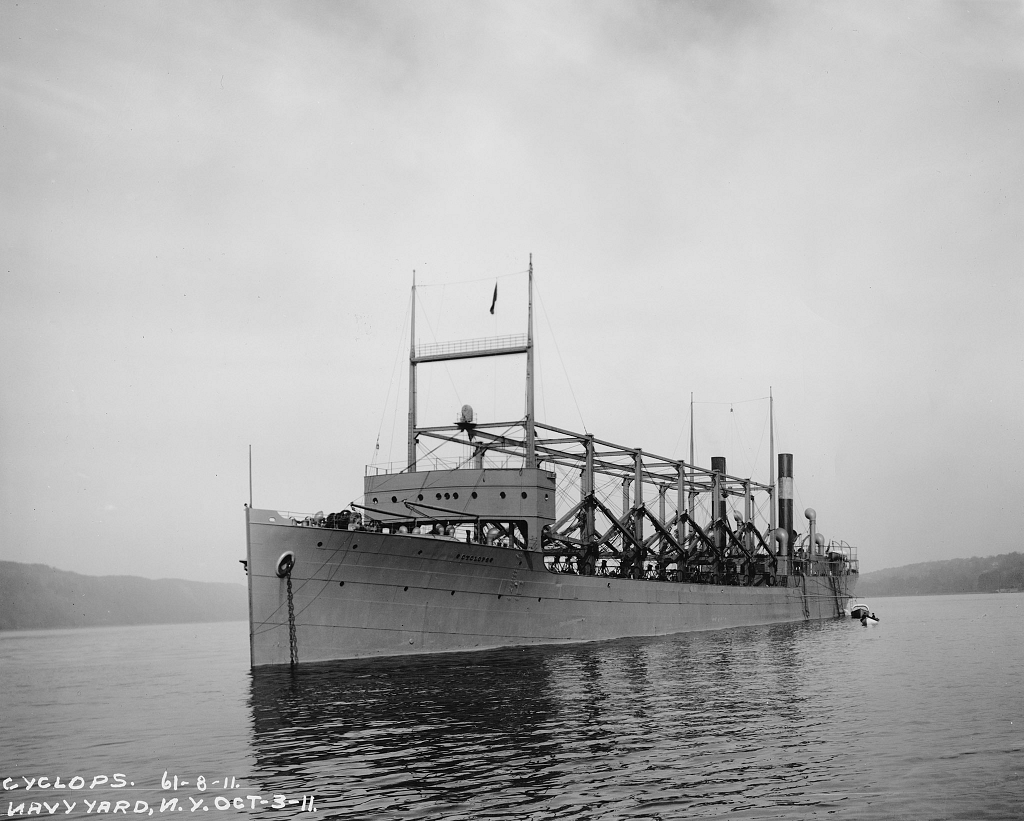
One of America’s greatest mysteries is the disappearance of US navy collier Cyclops. The ship was taken over by the Naval Overseas Transportation Services on January 9, 1918 and directed to head to Rio de Janeiro from Norfolk with 9,960 tons of coal. Then, the vessel departed from Rio de Janeiro on Feb 15, 1918 with 10,800 long tons, or 11,000 tons, of manganese ore before entering Bahia on February 20, 1918. Only a few days later, on February 22, 1918, Cyclops steamed for Baltimore, Maryland with no stops planned. However, it later deviated to Barbados, arriving on March 3rd. Finally, Cyclops left Barbados on March 4, 1918 with its starboard engine inoperative due to a cracked cylinder. The vessel was never seen again.
William Robert Wolf
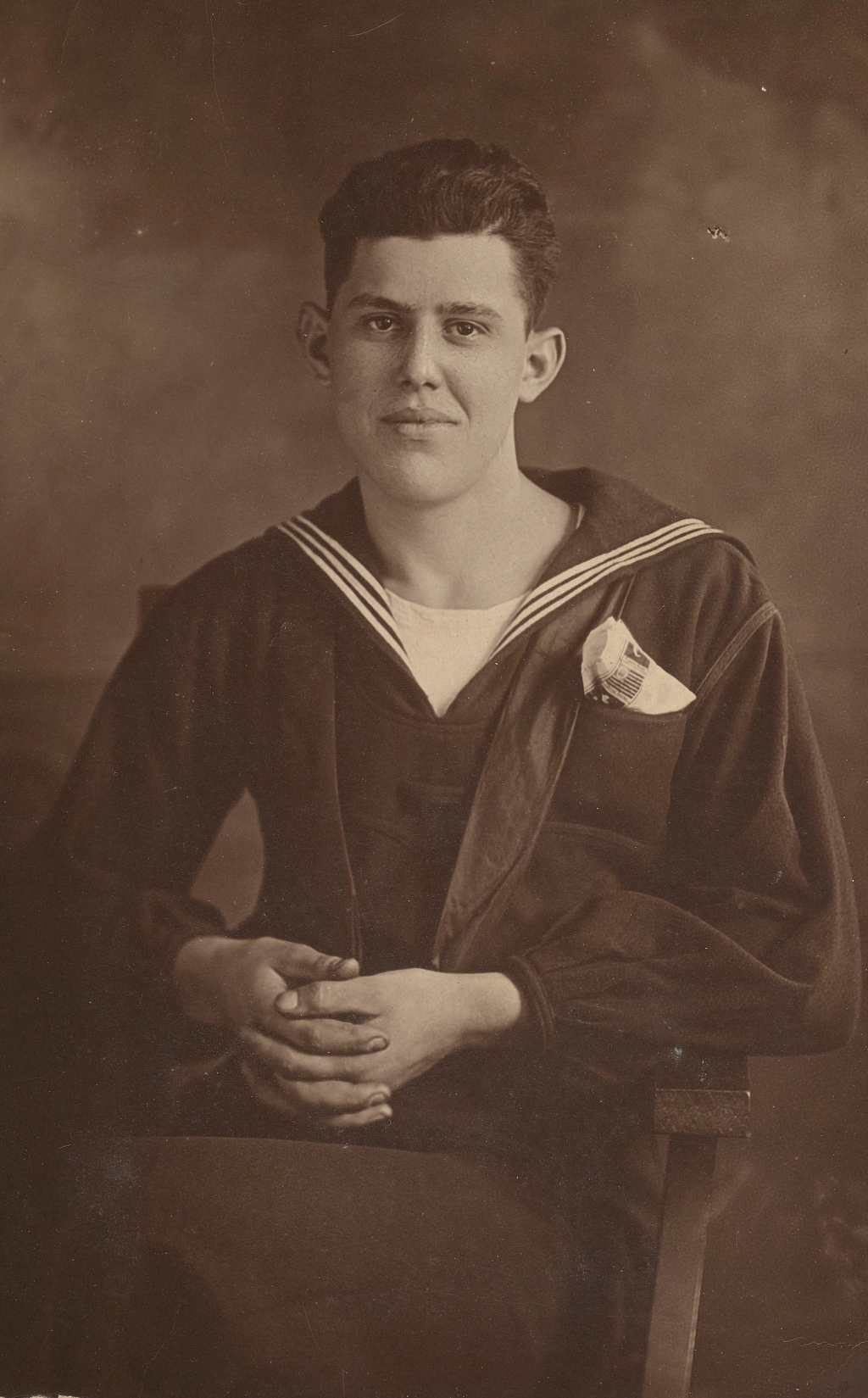
It all begins with a donation
In July of this year the Museum received a donation from Allen G. Zieber III regarding a crewmember of the collier Cyclops. In this donation was a letter from the American Red Cross regarding the loss of William Robert Wolf, a telegram reporting the disappearance of USS Cyclops, and a portrait depicting a young William Robert Wolf in his naval uniform. Allen G. Zieber III is the great nephew of William Robert Wolf, donating these items in loving memory and for the perseverance of his family member’s legacy.
Who was William Robert Wolf?
William Robert Wolf was the youngest of three boys born to German immigrants Frank L. Wolf and Rose Wolf. Wolf was drafted in 1917, shortly after WWI began. He was a mere 19 when his life was lost to the sea making his life as a second class fireman short-lived. Born on September 16, 1899, he was the youngest of 3, his brothers being Frank L. Wolf (Jr.) and Harry Wolf. Similarly to their younger brother, Frank L. Wolf and Harry Wolf were drafted in the first World War. Frank served in the One Hundred and Fifteenth Infantry at Camp McClellan, Anniston, AZ and Harry in the Company A US Engineers.
The greatest naval mystery of our time
In March of 1918 the collier Cyclops was overdue at an Atlantic port. Word was sent to the families of the crew after attempting to locate the vessel with no luck. On April 14, 1918 Frank L. Wolf received notice of the disappearance of his youngest son, “Willie” Wolf.
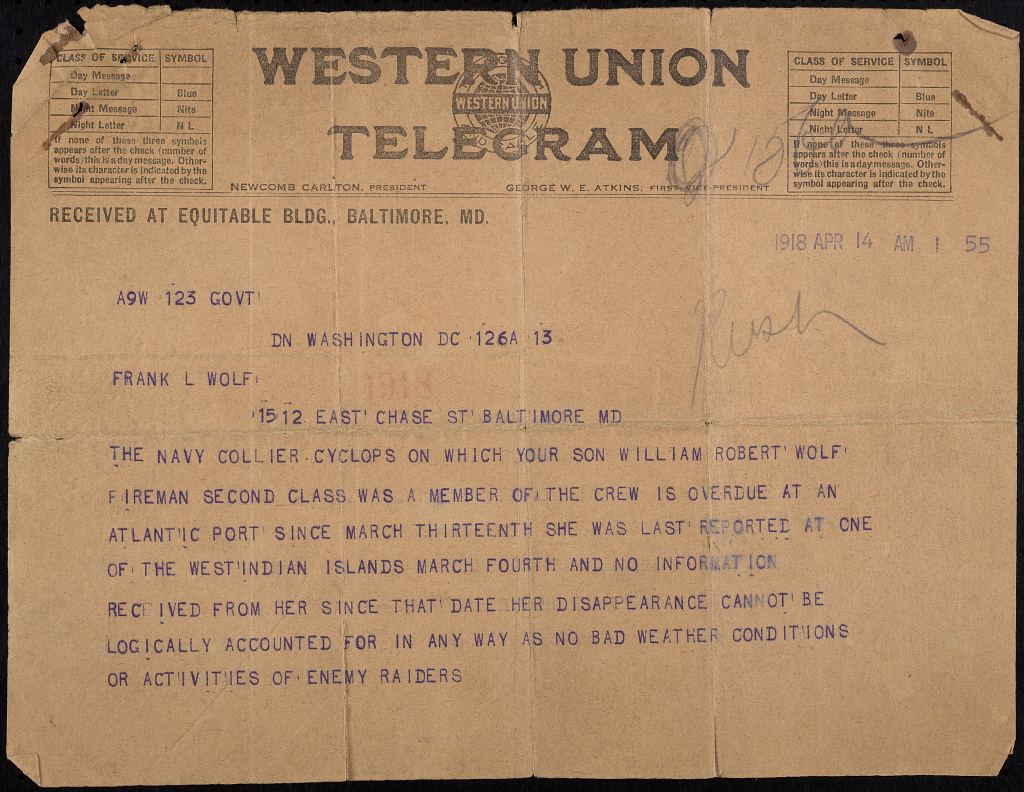
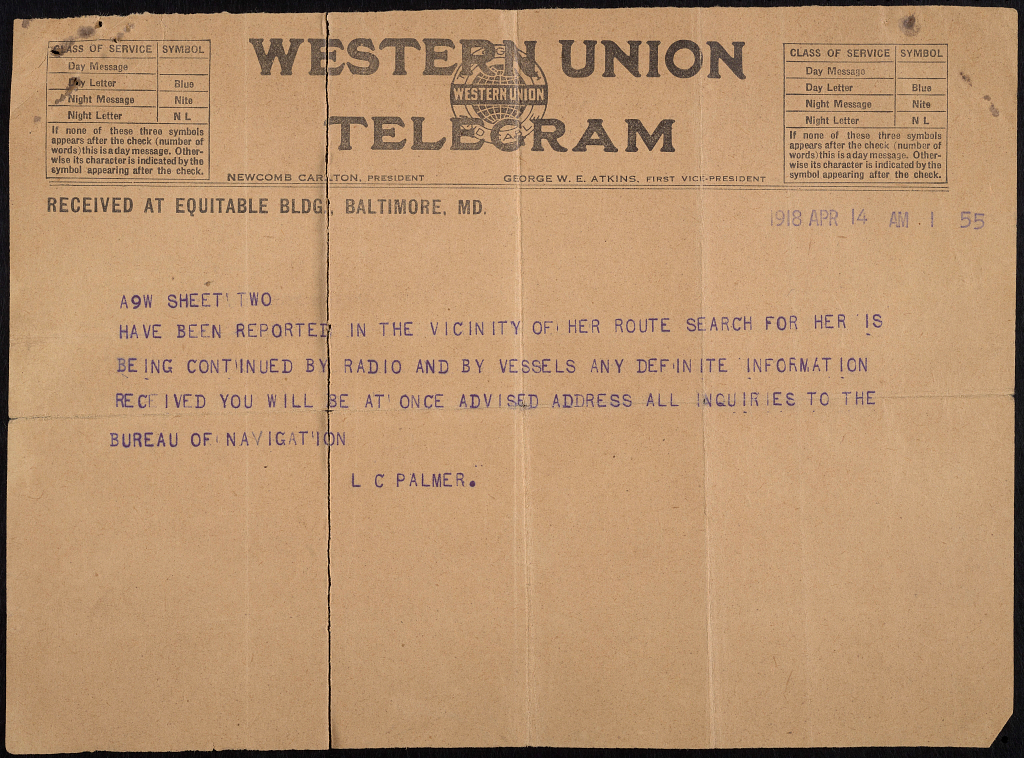
On May 2, 1918 Mary C. Hopkins, Executive Secretary of the Home Service Section of the American National Red Cross, sent a letter to Frank L. Wolf showing her condolences regarding his son’s death.
William Robert Wolf was officially declared dead on June 14, 1918. This came after months of searching with no clues as to what definitively happened to this vessel.
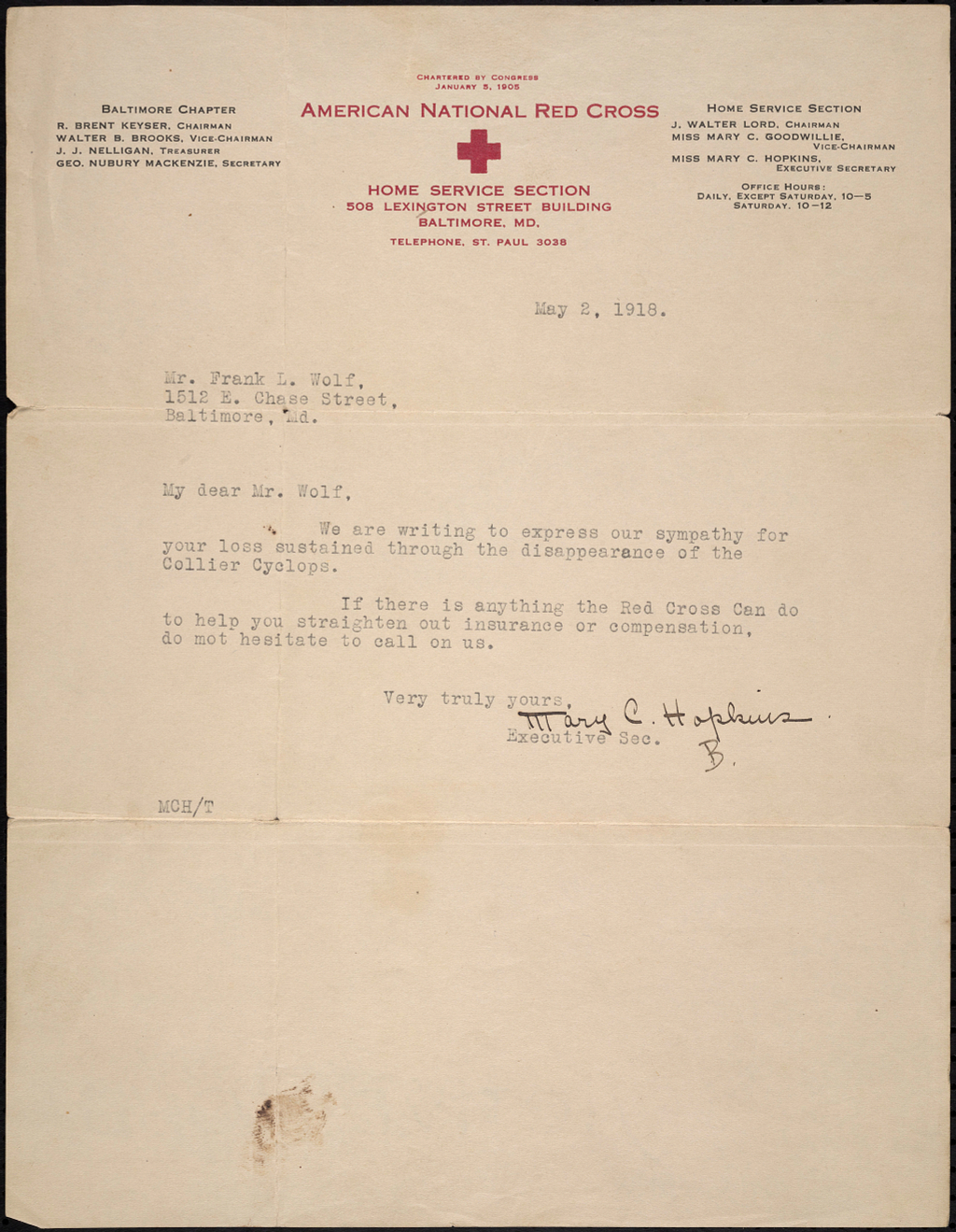
What really happened?
There are many interesting theories as to what happened to the infamous Cyclops. The best explanation we have today is that the collier running heavy with a load of 10,800 long tons of manganese and an engine out of commission. Certainly, the vessel capsizing due to the heavy load while running on half power is a plausible explanation and, above all, a large majority of the crew very well may not have known how to handle a situation such as this due to not having prior experience.
Known as the “greatest loss of life unrelated to combat in US Naval history,” the disappearance of USS Cyclops continues to interest and concern people everywhere. With 57 passengers, 15 officers, and a crew of 221 this disastrous event took the lives of hundreds and changed the lives of thousands.